Medical device reimbursement is important because it ensures that patients have access to the medical devices they need. It also ensures that healthcare costs are contained by making sure that medical devices are used in an appropriate and cost-effective manner.
Medical device companies benefit from reimbursement as it can help them to support the development and manufacture of new medical devices, which can improve patient care and outcomes.
One of the major challenges for medical device companies in getting technology reimbursed is demonstrating the medical necessity and effectiveness of their devices. Navigating the reimbursement process for medical device companies can also be challenging as payers in different countries & regions may have different reimbursement criteria and requirements. In addition, companies may need to conduct specific clinical studies and trials within specific regions which can take time and be high cost.
There is great variability for medical device reimbursement in Europe. National Healthcare systems are key stakeholders in some countries and may cover the cost of specific medical devices while in other countries private insurance companies play a larger role. Additionally, considerations may also be required with local regulatory frameworks so reimbursement strategies need to be customized for these variabilities.
The national healthcare system in France is governed by the government and the Parliament, while the regional healthcare system is handled by 25 health agencies (Agences régionales de Santé).
France has an obligatory social health insurance system that covers the whole population (Assurance Maladie Obligatoire – AMO). It is funded through payroll contributions and taxes paid by both employers and workers. However, it does not cover all healthcare costs; as a result, 90% of the population has voluntary/complementary private health insurance that pays the remaining costs. The government offers free supplementary coverage (Couverture Maladie Universelle Complémentaire – CMU-C) to families with yearly earnings below a certain level
Approximately 55% of hospitals are administered by the government (public and private not-for-profit). Although the tariffs vary, public financing is applied to both the commercial and public sectors.
Health Technology Assessment Organizations at the National Level
AFSSAPS (Agence Française de Securité Sanitaire des Produits de Santé): The French Health Products Safety Agency.
The French Health Products Safety Agency is in charge of all health product safety decisions as well as product monitoring after they are on the market. Scientific assessment, laboratory control, and advertising control are their three primary goals.
Haute Autorité de Santé (HAS): The French National Authority for Health strives to enhance patient care and create more uniformity throughout the healthcare system. Their operations span from drug testing, medical device testing, and other medical procedures to the production of recommendations and the certification of organizations.
The first stage in gaining market access for a medical device is certification by a recognized authority. A CE mark assures that medical equipment in Europe satisfy the standards of European Directives.
The first step is to get DRG funding.
The DRG Funding is a reimbursement program that is used in both the public and commercial sectors. The majority of devices are covered by this tariff and are paid for by the National Health Insurance.
COMEDIMS, a panel established in each hospital/group of hospitals, is responsible for enrolling and deciding which devices to purchase for their individual institutions. Devices that are not covered by this financing are often regarded innovative and/or expensive. For the remaining two categories, a separate budget is set aside, with financing often being temporary until the equipment is included in the DRG price.
The second step is to join the LPPR, which is a positive reimbursement list.
The MHI (Mandatory Health Insurance) payment for an ambulatory care device or a gadget that is too costly for the DRG tariff is listed on a ‘positive list’ (LPRR – Liste des Produits et Prestations Remboursables).
Without naming any firm or brand name, generic lines reflect a class of items, their application, and technical qualities. If a medical equipment meets the LPRR general line description, it is exempt from CNEDiMTS examination. The maker must merely mark the items with an LPRR number and report them to the Health Products Safety Agency for future monitoring. This signifies that the MHI will refund the gadget at the current pricing.
Products in this list are labeled with their own brand name. It generally occurs when the gadget is novel or has unique specifications that are expected to have an influence on health-care costs. This classification is also advised when the equipment requires special attention owing to safety concerns.
The manufacturer must submit two dossiers to CNEDiMTS: a technical dossier and an economic dossier. The technical dossier contains a technical explanation of the technology and its application, as well as information about the severity of the ailment, therapeutic advantages, and alternatives. The economic dossier comprises the reimbursement price or tariff, sales estimates, and pricing explanation, as well as a cost breakdown from manufacture to distribution. In both dossiers, a cost/benefit analysis may be presented.
1- A technical examination by CNEDiMTS will determine if a trade name listing is suitable based on its attributes.
If the device’s service is adequate to warrant compensation;
What is the patient’s additional value?
The number of patients who may benefit from the device
2- Tariff establishment
In consultation with the producer, the Economic Committee for Health Care Products (CEPS: Comité Economique des Produits de Santé) establishes a tariff for reimbursement by the MHI.
If there are several comparable trademark devices, the CEPS may consider developing a new generic description to establish a common tariff. Eventually, payment is requested in order to establish a registry and provide further clinical evidence.
The procedure should take 180 days, according to the legislation, but it might take longer.
Subscribe to our newsletter

VISIT US
ECLEVAR FRANCE:
231 rue Saint-Honoré, 75001 Paris, France
ECLEVAR GMBH
ERFURT, Erfurt Hauptbahnhof
4th, 5th floor
Bahnhofstr. 38 Erfurt 99084
ECLEVAR Australia
Umina Beach NSW 2257, Australia
ECLEVAR UK Limited
3rd Floor 207 Regent Street, London, W1B 3HH
CONTACT US